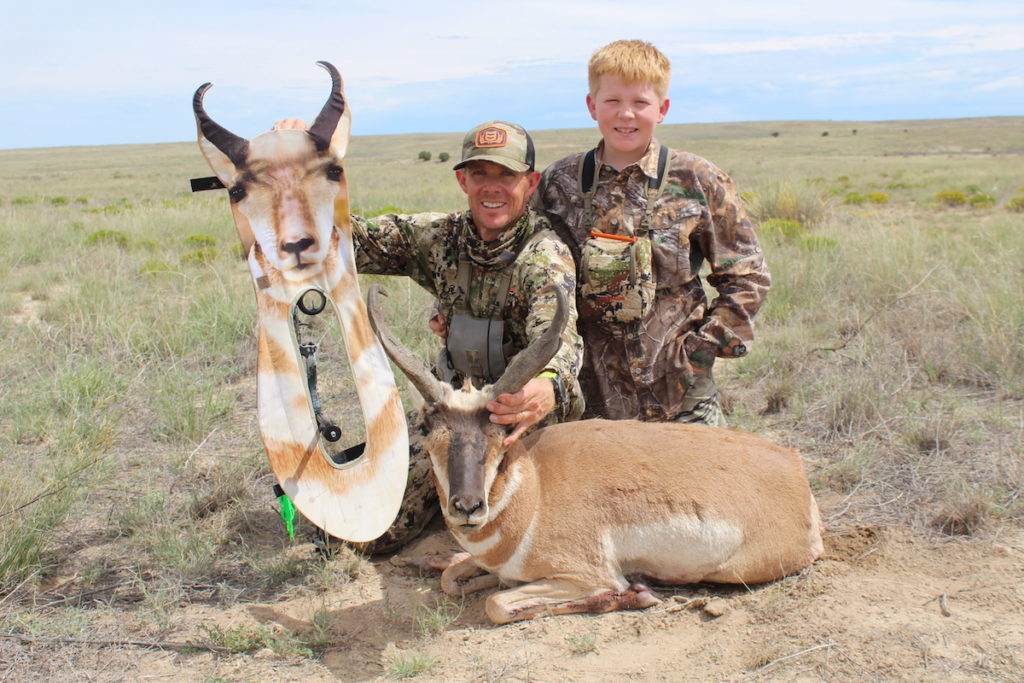
Pronghorn are a remarkable species. Their eyes are comparable to 12x binos, and cheetah-like speed makes them the fastest land animal in North America. They are brilliantly painted, and the curved ebony antlers of an adult male are impressive.
The most remarkable thing, though, is they don’t belong to the deer or goat families. Pronghorn are a species all to their own — thought by scientists to be the sole surviving member of an ancient family. As a member of the superfamily Giraffoidea, the pronghorn’s closest living relatives are the giraffe and okapi.
The most common method for running carbon through a pronghorn buck is taking advantage of his need to slake his thirst. A ground blind set over a well-used waterhole is an ultra-effective tactic — one I’ve used many times — but it requires extreme patience and heat tolerance. Temperatures in the blind can be boiling.
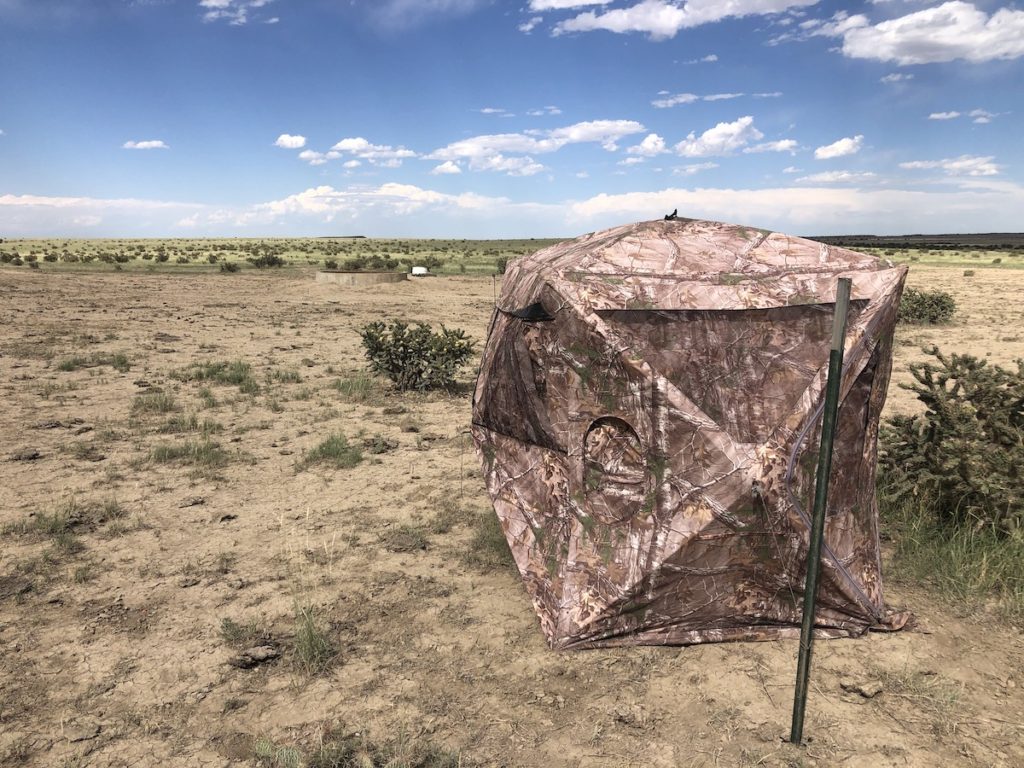
Spot-and-stalk is another excellent method, and if you’re looking to test your bowhunting ninja skills, spend a week slithering across the plains and try to get bowhunting close. If you can cut an arrow loose and that arrow hits home, you’ll have accomplished one of bowhunting’s most difficult tasks.
I’ve been addicted to archery pronghorn hunting for 25 years, and I’ve harvested several mature bucks over water, spot-and-stalk, and from natural blinds on fence crossings. My favorite method, though, is duping a buck with a decoy. Few things are more exciting than having North America’s fastest land animal running full tilt toward your imposter and then sliding to a stop in front of it like a cutting horse.
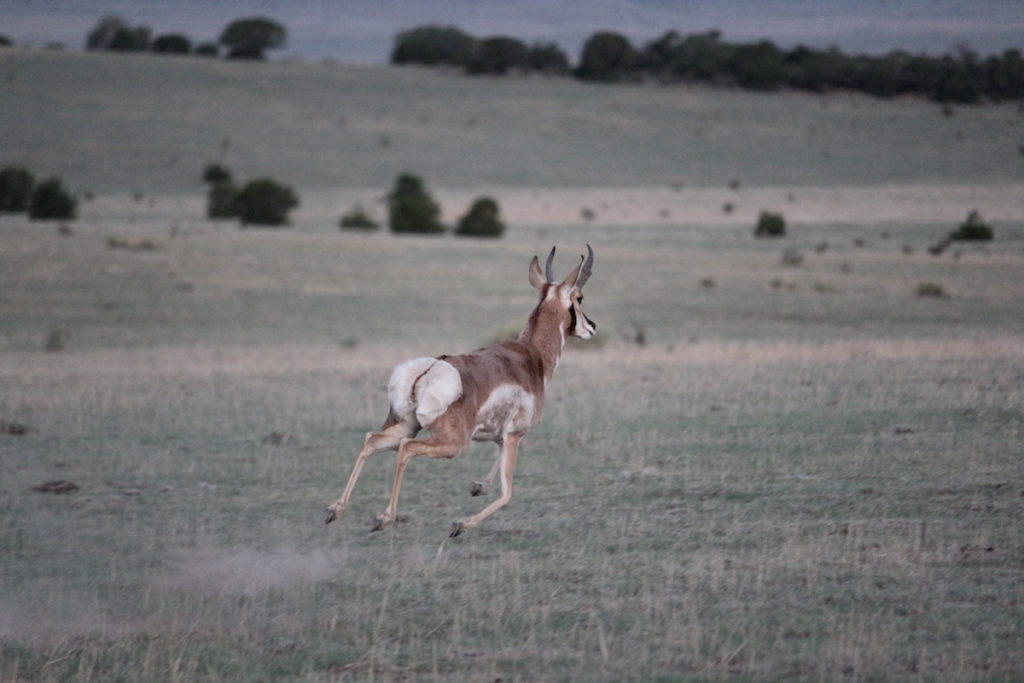
Here’s how to get it done.
I know it looks easy on outdoor television and in the videos you’ve watched, and truthfully, when the conditions are right, it is. What you don’t see on the screen are all the failed setups.
When possible, decoy with a partner. It helps to have one person focusing on running the decoy and keeping tabs on the approaching buck and one person concentrating on making the shot.
If you’re going to decoy solo, you’ll want a bow-mounted decoy and Ultimate Predator Gear’s (www.ultimatepredatorgear.com) Stalker Pronghorn Buck Decoy is the best I’ve found. I’ve gone almost exclusively to it. The decoy is durable, is an actual image of a pronghorn buck, and mounts to your compound bow’s top- and bottom- limb. The beauty is the shoot-through window. This decoy is a must-have if you plan to go on a solo pronghorn decoying mission.
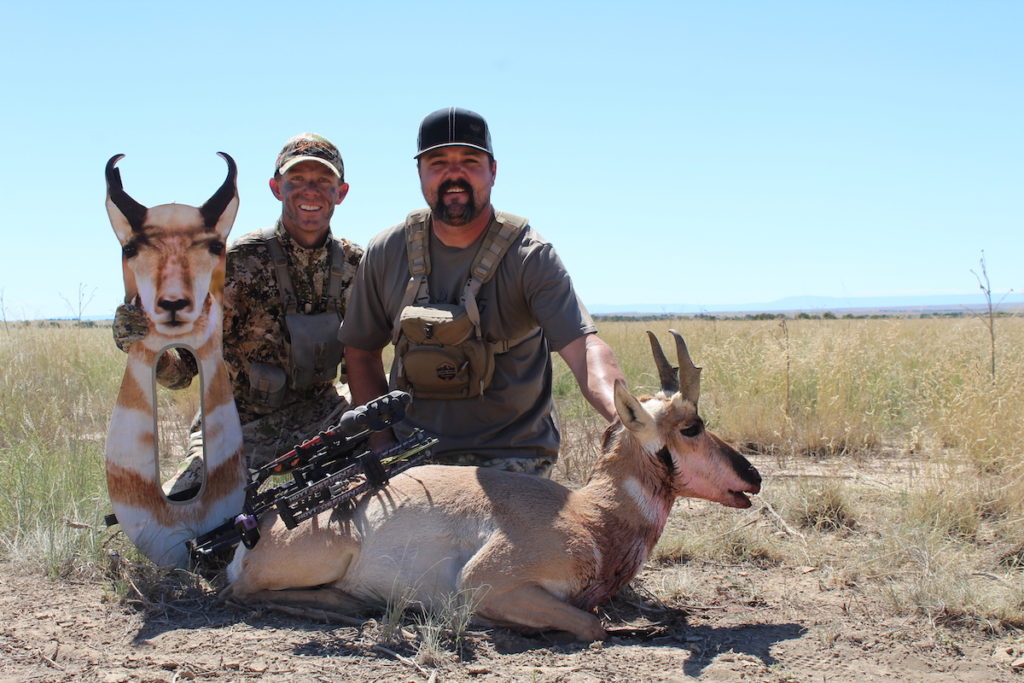
I get asked a lot about my favorite week to decoy pronghorn, and though the window is short, September 8-25 is my favorite 12-day span. The biggest bucks have taken control or remain in control of the girls, and challengers are circling, hoping for an opportunity to slip in and breed.
My favorite tactic during this time frame is driving county and two-track roads in my truck or ATV. I’m looking for dust, especially if the weather conditions have been moderately dry. Small dust trails kicked up by rutting pronghorn can often be seen in every direction. When you see a few small dust trails on your coveted pronghorn grounds, you can bet it’s a mature buck running off a challenger, and it’s time to move in.
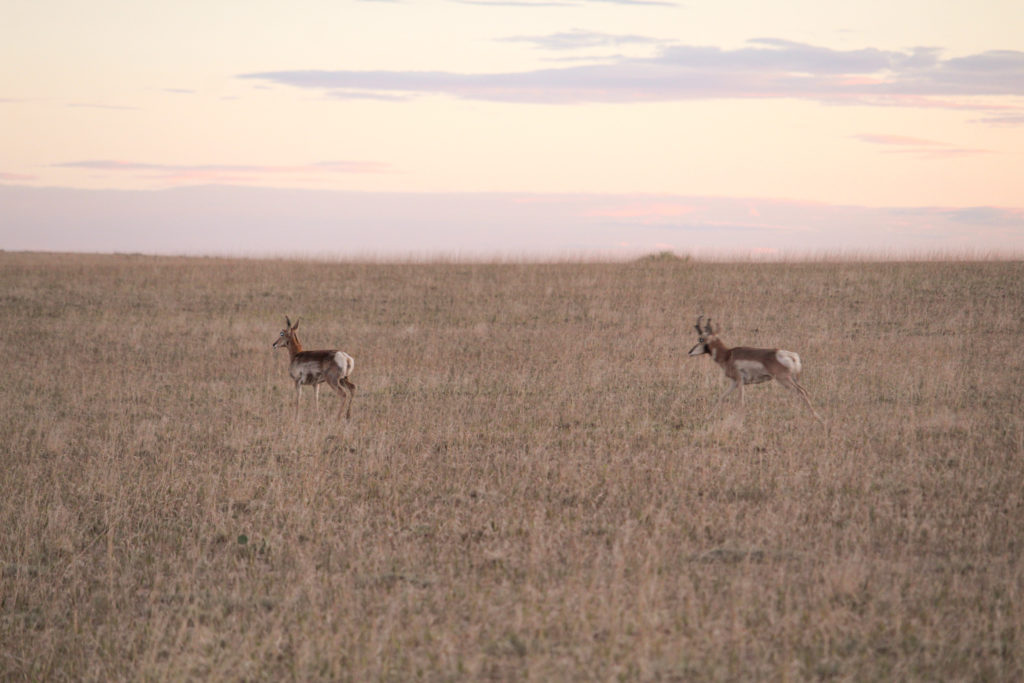
Your first play is to locate the chase and then locate the does. It’s not uncommon for a mature buck to run a challenger for nearly a mile before loping back to his ladies. This is the perfect scenario. If you arrive in time to see the chase, use the terrain and make your move while the herd buck runs off the satellite circler. Please don’t be too cautious; make it happen fast. This is especially true if the does can’t see you. If the does can see you approach with the decoy, slow down a tad, but not too much. Does often watch the chase, and even if they aren’t watching, the sight of a lifelike decoy coming toward them doesn’t typically alarm them during this phase of the season. They are used to challengers trying to slip in. I’ve had my best success using a steady walk that angles me toward the does but doesn’t take me straight toward them. I also pause along the way to make the scene appear more natural.
If possible, try to get within 200 yards — 150 is better if you can do so without spooking them — before the herd buck begins his return. In a perfect world, you want the herd buck to be satisfied with how far he’s run off a live challenger, only to turn and see a newbie buck has moved in on his ladies during his absence. If you can pull this off, get ready. Nine times out of 10, the herd buck will see the decoy too close to his girls and come at warp speed. As soon as he starts running in your direction, get ready. This is where it helps to have a partner. A partner can inform you about the buck’s approach and alter the position of the decoy if necessary while providing you with a quick, accurate range when the time is right.
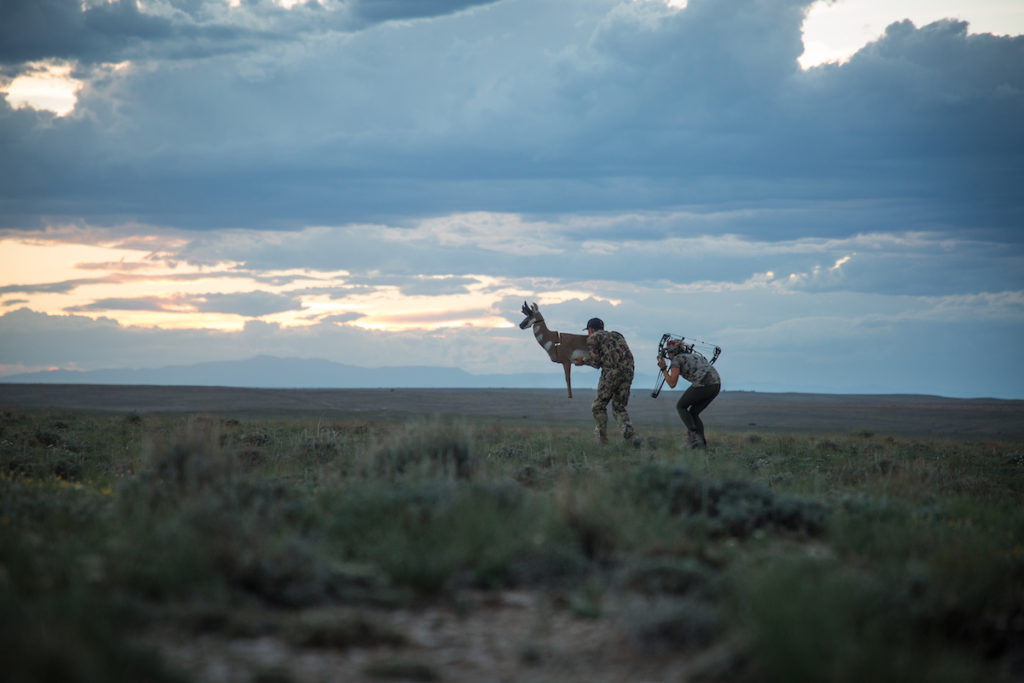
If you don’t have the luxury of a partner, quickly position yourself behind the butt of the decoy. Leave yourself enough room to get drawn, nock an arrow and get ready. I’ve had bucks come from over a quarter mile in less than a minute. Once the buck slams on the brakes (this typically happens between 20 and 40 yards), draw and take your shot. I like to pull my string back as soon as the buck stops, and I want him to see me draw. Again, the herd buck will expect a reaction from the challenger, so he fully expects some movement. Take the first broadside or quartering-away shot he gives you.
If you’re not fortunate enough to get in on some dust-kicking action, try and locate some bedded goats. In a perfect world, you want to find a group with a buck bedded on the back side of the girls, but if this isn’t the case, it’s not a deal breaker. I’ve decoyed bucks bedded right with their does, and bucks bedded in front of the herd. The reasoning behind the “bedded on the back side” theory is that the herd buck will feel more threatened if there’s nothing but open prairie between the challenger and the herd buck’s does. I’ve tested this theory multiple times, and while I believe it to be accurate, if you catch a testosterone-overloaded buck with estrous does, it won’t matter where he’s bedded. He won’t tolerate an intruder moving in on his rut party.
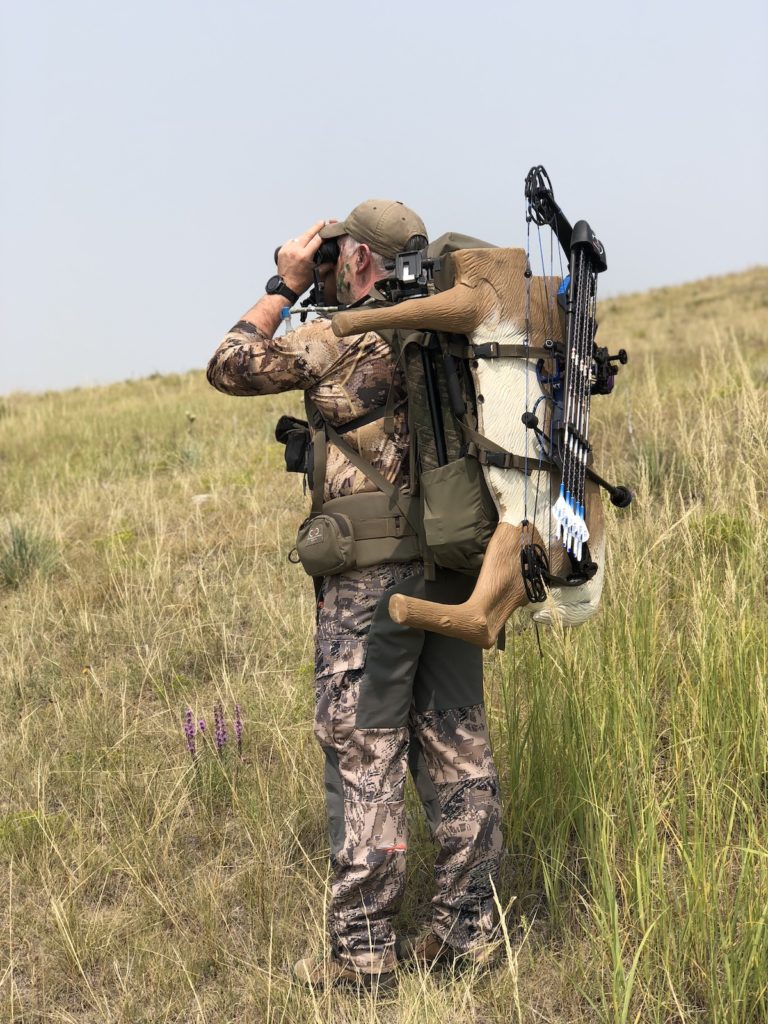
When moving in on a bedded buck with does, it’s essential not to let the buck, or his does see you or the decoy before the time is right. I like to deploy the decoy, walk with it for a few yards (no more than 15), and let the herd see it naturally. This allows you to expose the decoy’s horns, head, and small body parts for a few moments. I’ve had great luck with this. The bedded onlookers believe it’s yet another challenger slipping in.
Once you have the decoy in full view of the buck, stop. Let the buck stand and react. If the buck stands and stares for longer than three minutes, chances are he’s not going to come. Don’t ask me why, but like many things in hunting, nothing is ever certain. Typically, if a buck is going to work, you’ll know instantly. He will rise from his bed and come at either a lope or a sprint. I have, however, had several bucks stand, inspect the decoy for about a minute, check the status of the does, and then come at full tilt. Again, once the buck commits, be ready to shoot. It will happen very, very fast.
Pull the stakes and work toward him if a buck stands and inspects the decoy for longer than three minutes. You have nothing to lose, and more than once, this show of aggression by a lesser challenger has prompted the reluctant buck to come in on a string.
***Buy and Sell on GunsAmerica! All Local Sales are FREE!***
